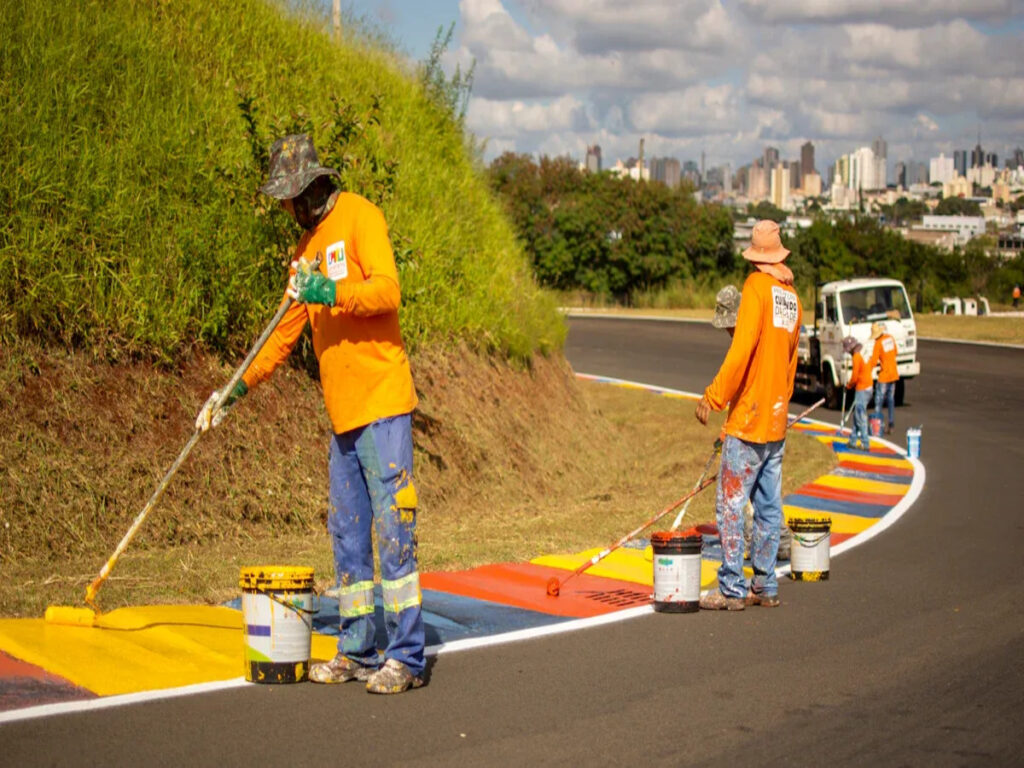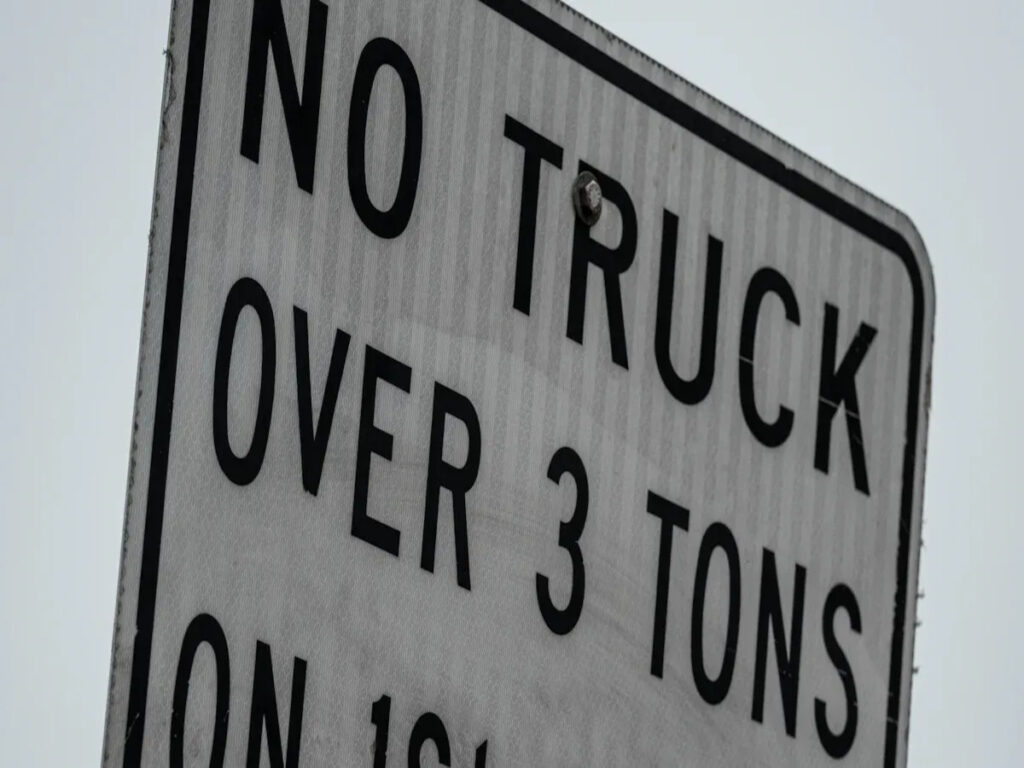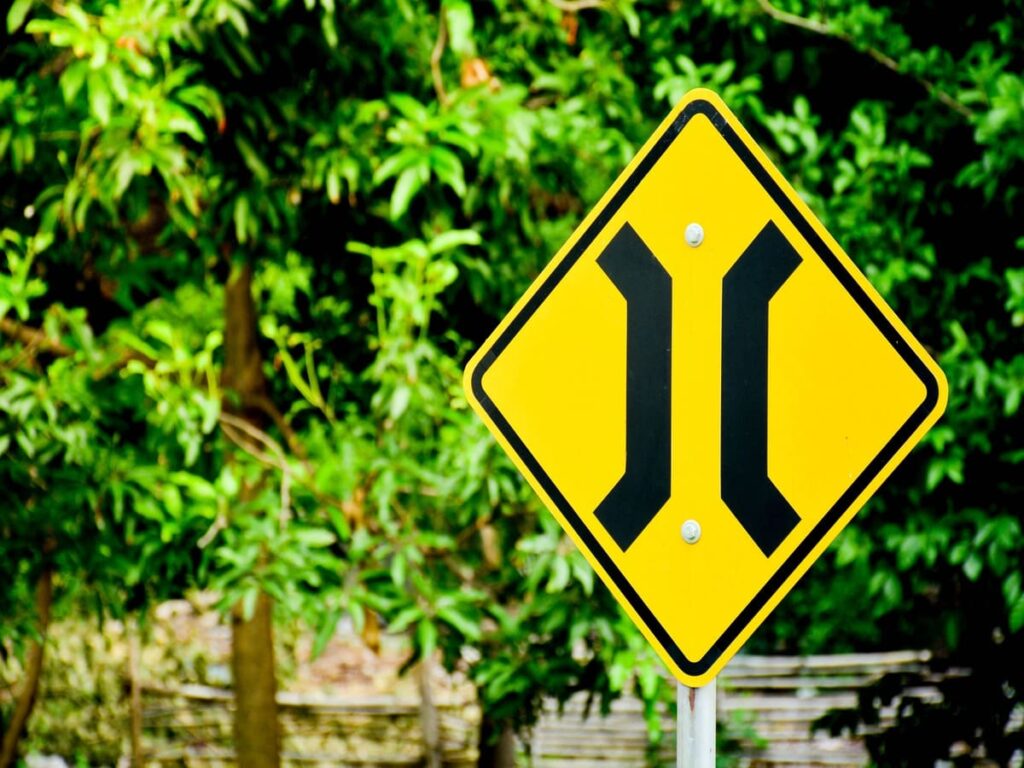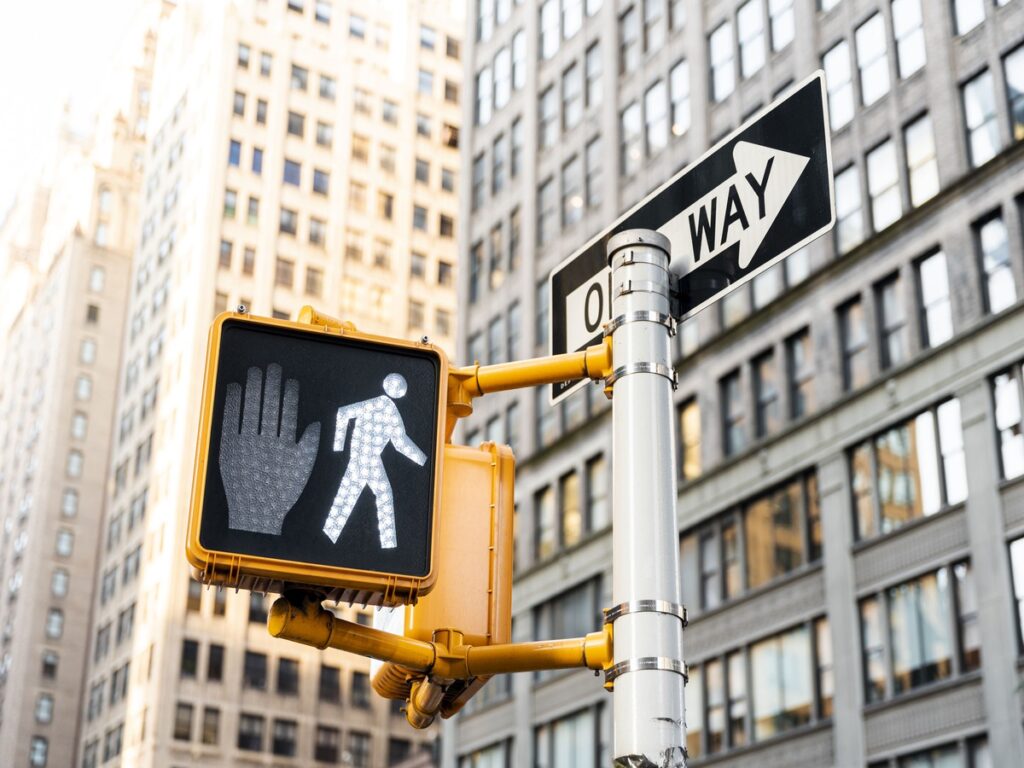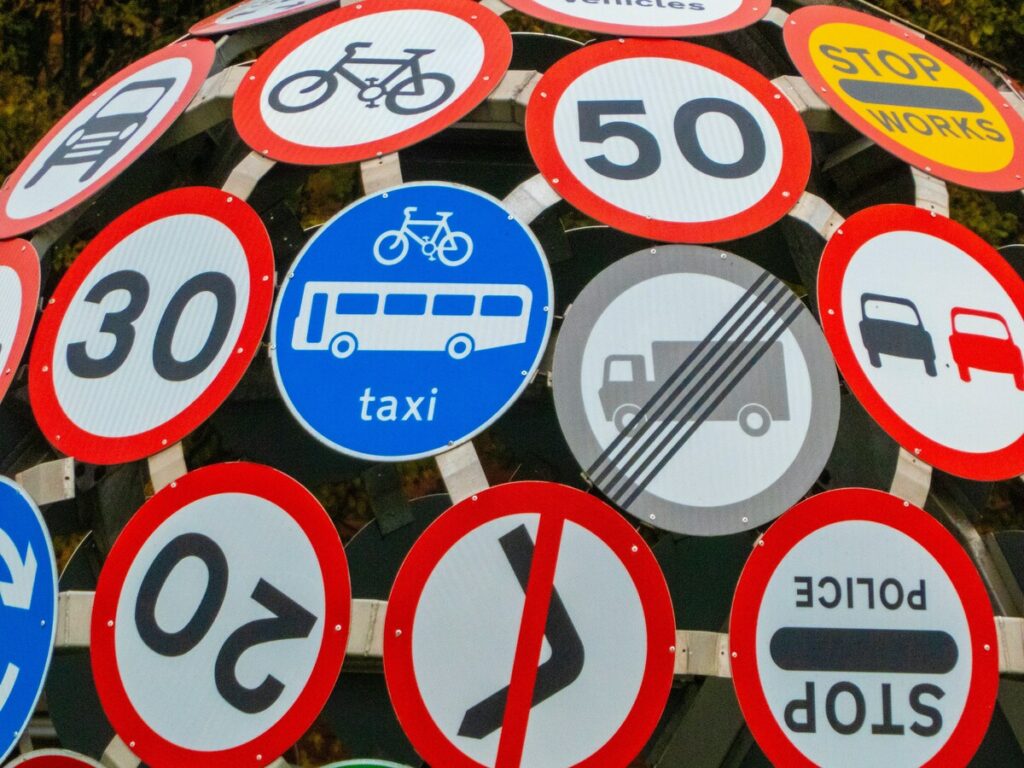
Choosing the best reflective materials for traffic signs keeps people safe and follows the rules. Reflective signs help stop accidents, 특히 밤이나 날씨가 좋지 않습니다. Studies say that making pavement markings more retroreflective can lower crashes on roads with many lanes by up to 18%. People who make, buy, or plan traffic signs should check each sign’s technical details, 규칙, and effect on the environment to make them work best.
Optraffic은 고품질을 제공합니다 반사 표지판 that meet safety and regulatory standards, ensuring maximum visibility and durability in all weather conditions. With our range of retroreflective materials, OPTRAFFIC helps you enhance road safety and ensure that your traffic safety signs are clear and effective, 낮이나 밤.
주요 테이크 아웃
- Reflective materials help people see traffic signs at night and in bad weather. This helps drivers react faster and can lower accidents.
- Diamond grade microprismatic sheeting is the brightest and lasts the longest. It is best for busy roads and important signs.
- Picking the right material depends on the road, how many cars use it, 조명, 그리고 예산. This helps balance safety, 비용, 그리고 얼마나 긴 징후가 지속되는지.
- Signs need to be put up right and checked often. Cleaning and checking brightness keep signs safe and working well.
- New technology like smart reflective films and nanotechnology make signs brighter, 더 강력합니다, 그리고 환경에 더 좋습니다.
Reflective Signs and Road Safety
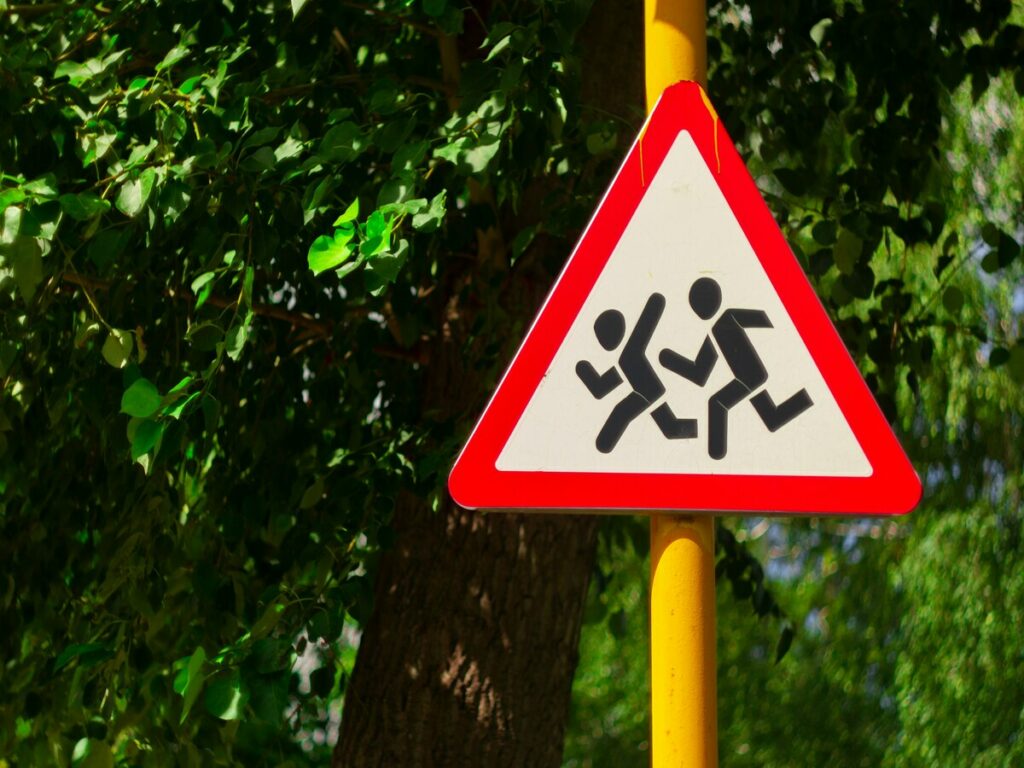
Importance for Nighttime and Weather
Reflective signs are very important for road safety at night and in bad weather. Drivers have trouble seeing normal signs when it is dark or when there is fog, 비, 또는 눈. Reflective materials work by sending light from car headlights back to the driver. This makes the signs easier to see from far away. Studies show that better reflective materials help drivers notice signs faster. They can also react more quickly. 예를 들어, 그만큼 Ohio Department of Transportation did a study. They found that adding reflective parts to Chevron signs made them 286% brighter at 225 미터. This helps drivers spot changes in the road sooner, especially when it is dark or stormy.
Older drivers and people with vision problems get the most help from reflective signs. When it is hard to see, like in heavy rain or fog, it is much harder to spot dangers. Detection distances can drop by more than half. Reflective materials help fix this problem. They give all drivers a better chance to see and understand warnings. Reflective technology is also used in things like life jackets. It helps people be seen and stay safe in emergencies. These facts show why reflective signs are so important for safe travel at night and in bad weather.
Role in Accident Prevention
Reflective signs do more than just help people see. They also help stop accidents. When drivers can see signs clearly, they make safer choices. They do not have to stop or turn suddenly. Using high-performance reflective sheeting, like ASTM D4956 Type XI, has lowered deadly nighttime crashes on roads where it is used. 다른 경우, LED stop signs at country intersections cut crashes by 52%. These examples show that better sign visibility makes roads safer.
Statistical data also proves that reflective signs lower accidents:
| 증거 설명 | 영향 / 통계량 |
|---|---|
| Smart LED delineators | 30% 충돌 감소 |
| Reflective delineators in Copenhagen | 25% decrease in accidents |
| Edge lines on rural roads | 26% 에게 33% crash reduction |
| Run-off-road crashes (도시의) | 11% 절감 |
| Run-off-road crashes (시골의) | 13% 절감 |
| Speed-related crashes (시골의) | 4% 절감 |
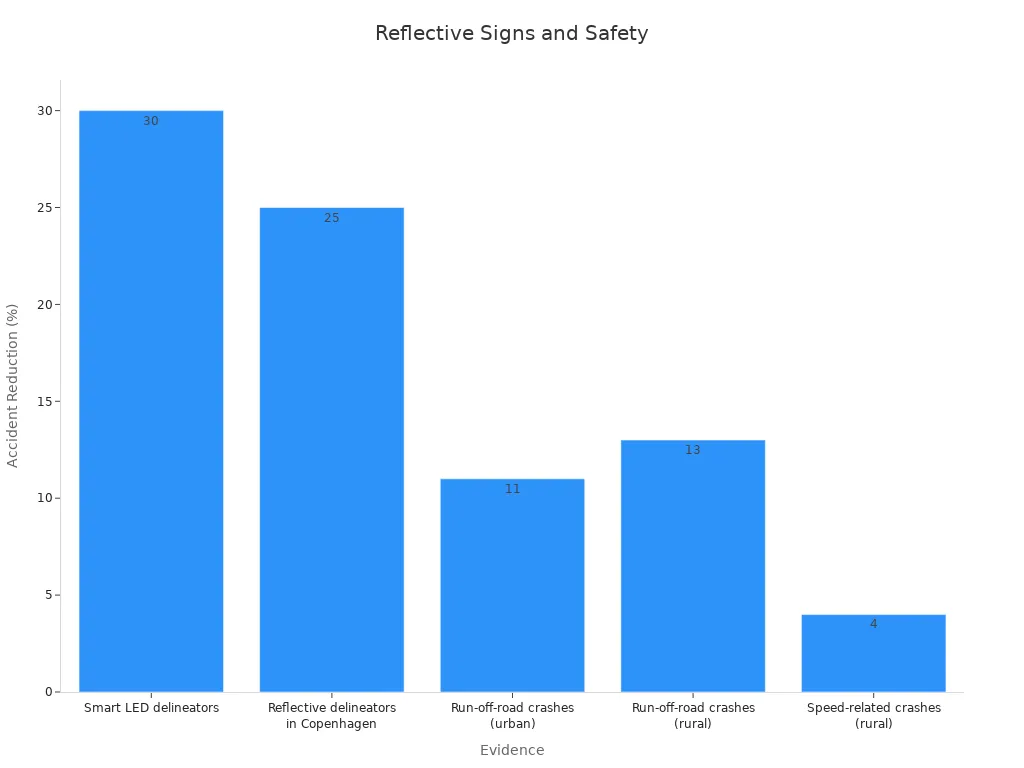
These numbers show that reflective signs are very important for stopping accidents and keeping roads safe.
Types of Reflective Materials
엔지니어 성적
Engineer grade reflective sheeting is the basic type for traffic signs. Makers use beaded plastic or prismatic optical technology to make it. It usually meets ASTM D4956 Type I rules. This material works well for signs that are not very important, like parking or way-finding signs. The table below shows the main features:
| 사양 / 특성 | 설명 |
|---|---|
| 재료 유형 | Beaded plastic reflective sheeting |
| 후향성 | High at night, meets Type I standards |
| 내구성 | 5-7 야외에서 몇 년 |
| Application Areas | 주차, 광고, and informational signs |
| 환경 저항 | UV, 열, and humidity resistant |
| 설치 | Easy adhesive application on metal, 플라스틱, 또는 유리 섬유 |
Engineer grade reflective sheeting is not expensive and works well in places with little traffic. It is bright enough and simple to put on, so many people use it for graphic reflective vinyl.
고강도 프리즘
High intensity prismatic reflective sheeting uses special prismatic and microprismatic technology. This material sends light back very well, so signs are brighter and easier to see at night. It follows ASTM D4956 Types 4 그리고 5 그리고 mutcd 규칙. High-intensity prismatic sheeting does not get damaged by UV, 물, 또는 악천후. It lasts a long time outside. Many cities use this material for important signs on busy roads.
다이아몬드 등급
Diamond grade reflective sheeting is also called diamond grade traffic reflective vinyl. It uses microprismatic cube-corner optics. This makes it send back up to 60% of the light, so it is great for important traffic control signs. Some main benefits are:
- Very bright—up to six times brighter than regular markings.
- 오래 지속됩니다, with a 7-year warranty.
- Stays strong against weather, 흙, 그리고 녹.
- Meets or beats NHTSA and emergency vehicle rules.
Diamond grade reflective sheeting helps people see signs very well and lasts a long time, 힘든 곳에서도.
Fluorescent Materials
형광 반사 시트 makes signs easier to see in low light and during the day. Makers test these materials to meet ISO 20471 규칙. Studies show prism-type retroreflective materials work better in rain and from the side. Plain-type samples keep their retroreflective power after stress tests. Fluorescent materials are good for school zones, construction areas, 그리고 횡단 보도, where people need to see signs clearly.
Microprismatic vs. Glass Bead
| 반사 시트 유형 | Retroreflectivity Performance | Typical Light Return | 적절한 응용 프로그램 | Durability/Lifespan |
|---|---|---|---|---|
| 엔지니어 성적 (Glass Bead) | Basic retroreflectivity using glass beads | 보통의 (ASTM D4956 Type I) | Non-critical signs | 5-7 연령 |
| 고강도 프리즘 (잘 알고 있기) | Glass beads in honeycomb lattice | ~16% light return | 교통 표지, 건설 구역 | 최대 10 연령 |
| Diamond Grade Cubed (미세 분산) | Advanced microprismatic cube-corner optics | 최대 60% light return | High visibility needs | Superior durability |
Microprismatic reflective sheeting, 다이아몬드 등급처럼, is brighter and lasts longer than glass bead types. It does not wear out from weather or sunlight. This makes it the best choice for tough outdoor jobs. Graphic reflective vinyl with microprismatic technology keeps people safe and saves money on repairs.
Best Material for Street Signs

Performance Comparison
Picking the best material for street signs means looking at how well each one works. 알류미늄, HDPE, and PVC all have their own good points. 알루미늄은 가볍고 녹슬지 않습니다. It shines well when it has a good coating. HDPE is strong and bends without breaking. It can handle hits and bad weather. PVC is stiff and stands up to strong winds. But PVC can crack when it gets very cold.
Reflective sheeting grades help people see signs better. Engineer-grade sheeting gives basic shine. Diamond-grade sheeting shines the most. A 3M study says Diamond Grade DG³ sheeting reflects almost twice as much light as High Intensity Prismatic sheeting. This means drivers can see signs better at night. It also helps meet tough rules for street signs.
A traffic reflective cross reference chart lets people compare these materials easily. The table below shows the main things to look at:
| 재료 / 시트 유형 | 반사율 | 내구성 (연령) | Cost per ft² ($) | 유지 | 환경 영향 |
|---|---|---|---|---|---|
| 알류미늄 + 다이아몬드 등급 | 제일 높은 | 10-15 | 2.00 | 낮은 | 재활용 가능 |
| 알류미늄 + 고강도 프리즘 | 높은 | 7-10 | 0.75 | 낮은 | 재활용 가능 |
| HDPE + 엔지니어 성적 | 보통의 | 5-7 | 0.60 | 낮은 | 재활용 가능 |
| PVC + 엔지니어 성적 | 보통의 | 5-7 | 0.55 | 낮은 | Less eco-friendly |
메모: Diamond Grade sheeting is best for seeing signs and following rules in important places.
Cost and Longevity
Saving money is very important for cities and towns. Upgrading street signs to better reflective materials costs a lot at first. The chart below shows how much it costs to upgrade signs to meet the minimum shine rules:
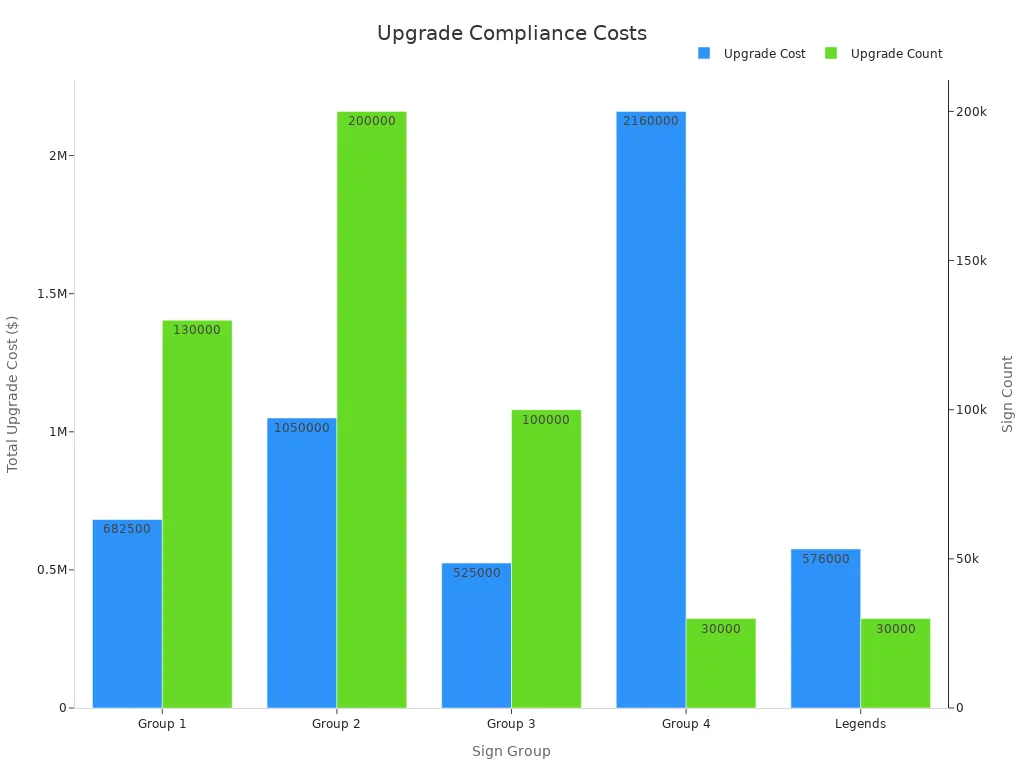
A good traffic reflective cross reference chart helps leaders pick the right balance between cost and how long signs last. Aluminum signs with diamond-grade sheeting cost more at first. 그러나 그들은 더 오래 지속되며 덜 고정이 필요합니다. Studies show blue signs can last up to 35 연령. White or red signs may need to be changed after 10 에게 16 연령. Many signs still shine well even after the 10-year warranty. Some can last up to 15 연령. This means cities do not have to replace signs as often, 돈을 절약합니다.
새로운 기술, like graphene-based reflective materials and new prismatic sheeting, makes signs last even longer and shine brighter. These new ideas help cities get more value from each sign over time.
응용 프로그램 시나리오
The best material for street signs depends on where the sign will go and how many cars use the road. On highways and big roads, aluminum signs with diamond-grade sheeting are best. They help drivers see signs from far away, 밤이나 날씨에도.
On smaller roads and in neighborhoods, HDPE or PVC signs with engineer-grade or high-intensity prismatic sheeting work well. These choices save money and still let people see the signs clearly. They are good for places with less traffic.
Special places, like school crossings and construction zones, need fluorescent and diamond-grade reflective materials. These make signs easy to see during the day and at night. This keeps people and workers safe.
- 고속도로: 알류미늄 + 다이아몬드 등급
- Local Roads: HDPE/PVC + Engineer or High Intensity Prismatic
- School Zones/Construction: 알류미늄 + Fluorescent or Diamond Grade
To pick the best material for street signs, look at the traffic reflective cross reference chart, think about cost, and match the material to where the sign will go. 이것은 모든 사람을 안전하게 유지하는 데 도움이됩니다, follows the rules, and saves money in the long run.
Traffic Sign Visibility Factors
내구성
How long a traffic sign lasts depends on the material. 해, 비, and pollution can make signs weaker over time. Some materials lose strength faster than others. 예를 들어, non-stabilized HDPE gets much weaker after 300 hours in the sun. It keeps only 21% of its starting strength. UV-stabilized HDPE stays strong even after 1,300 hours in the sun. Polycarbonate and polypropylene also get weaker after being outside for years. The table below shows how different materials change when exposed to weather:
| 재료 / 상태 | Exposure Type | Durability Loss Metric | 값 / 결과 |
|---|---|---|---|
| Non-stabilized HDPE | Accelerated UV (300 시간) | Tensile strength extensibility reduction | Reduced to 21% of original |
| UV-stabilized HDPE | Accelerated UV (1300 시간) | Little degradation | Stable up to 1300 h exposure |
| 폴리 프로필렌 (pp) | Natural weathering | Fracture strain retention | 47% retention |
| 폴리 카보네이트 (PC) | Natural weathering | Fracture strain retention | 17% retention |
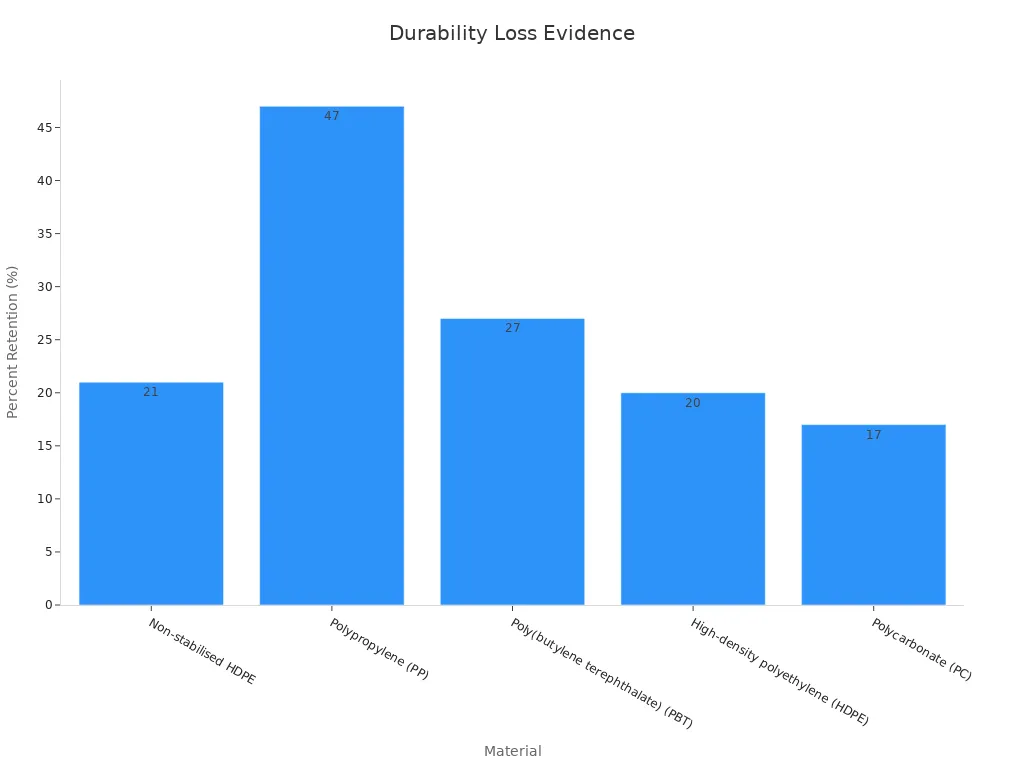
PMMA samples get more cracks and let less light through after sun, 열, 그리고 습도. Cleaning can help a little, but not fix everything. This is why picking the right material is important for signs to stay clear for a long time.
환경 영향
The environment affects how easy it is to see a sign. Where a sign is placed and how high it is can cause more dirt to build up. Air pollution also makes signs dirty. Dirty signs are harder to see and can be unsafe. Agencies use this information to plan cleaning and keep signs easy to read.
- Plastic signs are cheaper but break down faster in bad weather.
- Aluminum signs do not rust and last longer, 힘든 곳에서도.
- Ceramic signs are very strong and handle weather well, 그러나 그들은 더 많은 비용이 듭니다.
- Glass signs are very bright but can break more easily.
팁: Pick the right material for your weather and traffic to make signs last longer and work better.
준수 표준
Traffic signs must follow strict rules to be safe. 미국에서, ANSI / ISES 107-2020 sets the rules for safety gear that is easy to see. 이 규칙은 얼마나 밝은 지에 대해 다룹니다, 강한, and well-made the material is. Tests check if the material stays good after washing and use. Labels show if a product meets the rules and what class it is.
유럽에서는, EN ISO 20471 makes sure safety clothing and materials stay bright and strong. It checks color, 힘, 그리고 착용. Certified products have a CE mark and must pass tests every five years. These rules help make sure signs and safety gear work well in all conditions.
메모: 확인하다, 깨끗한, and replace signs often to keep them safe and easy to see.
Advanced Technologies
Smart Reflective Materials
Smart reflective materials are making traffic signs better. These materials use new technology to help people see signs more easily. Many companies now use prismatic sheeting instead of glass beads. Prismatic sheeting makes signs brighter and easier to see from many angles. Some new films, like ones from AT SAFETY, 매우 밝고 오래 지속됩니다. They work well in the day and at night. They also do not wear out fast in bad weather.
- High-grade retroreflective materials like RA2 help people see signs in any light.
- Smart lighting systems change sign brightness to match the surroundings.
- This saves energy and helps people see signs better.
- Automated tools check how well signs reflect light.
- Advanced computer programs, like YOLOv8, help watch and fix signs.
These new ideas help drivers see signs clearly, 어둡거나 비가 오면.
Nanotechnology
Nanotechnology makes traffic signs stronger and brighter. Scientists add tiny things like nanoclay or titanium dioxide to paints and coatings. These nanomaterials help signs last longer and stay clean. Nanostructured coatings stick well to signs, so they do not peel off. Research shows nanoclay can make signs 30% tougher. Titanium dioxide helps signs clean themselves, so they stay bright with less work.
Nanotechnology also helps graphic reflective vinyl keep its color and shine. Signs with nanocomposite paints can last up to five years. Old paints only last about three years. This means cities do not have to fix or replace signs as often.
친환경 옵션
Eco-friendly choices are important for traffic signs. New reflective materials last longer and do not fade quickly. This means less waste. Many signs now use microprismatic sheeting or glass beads. These reflect more light and do not need extra power. This saves energy and cuts down on light pollution.
- Reflective signs do not need extra lights, 행성을 돕는다.
- Diamond-grade sheeting lasts longer and does not need to be replaced often.
- Government rules like MUTCD say signs must be safe and good for the environment.
- More people want eco-friendly materials and smart traffic systems.
Traffic reflective vinyl and other new materials help cities keep people safe and protect nature.
Selection Factors
Location and Traffic Volume
Where a sign is placed and how many cars pass by are important. Busy roads wear out reflective signs faster. Highways and main intersections need strong materials that stay bright for a long time. When more cars use a road, the shine on markings fades quicker. This can cause more accidents, especially at night on dark roads. For these places, agencies pick reflective grades that last longer and stay easy to see. Parking lots or quiet neighborhood streets do not need the strongest materials. They can use signs with medium shine and strength.
| Reflective Sheeting Grade | ASTM D4956 Type | 반사율 수준 | 일반적인 응용 프로그램 |
|---|---|---|---|
| Advanced Engineer Grade (AEG) | I 형 I | 낮은 | 주차장, 이웃, 창고, loading docks |
| 고강도 프리즘 (잘 알고 있기) | III 형, IV | Medium-High | 도로, 정지 신호, 속도 제한 표지판, 규제 징후 |
| 다이아몬드 등급 (DG or DG3) | Type IX | High-Very High | Permanent DOT projects, heavy traffic roadways, 경고 신호, 작업 구역 |
Lighting Conditions
How much light is around a sign changes how well drivers see it. In places with little street light or lots of fog, 비, 또는 눈, signs must be easy to spot. Materials with higher retroreflectivity help drivers see signs from farther away. 이것은 사고의 가능성을 낮 춥니 다. Prismatic sheeting and diamond grade films work best in these tough spots. 특수 코팅, like UV-resistant and weatherproof layers, keep signs bright even in bad weather. Agencies should look at local light and weather before picking materials for new signs.
팁: Use high-intensity or diamond grade sheeting where it is dark to help people see signs better and stay safe.
예산 고려 사항
Money is always important for cities and groups that take care of roads. Better reflective materials cost more at first, 그러나 그들은 더 오래 지속되며 덜 고정이 필요합니다. This saves money on new signs and repairs over time. On busy roads or where weather is rough, spending more on good materials is smart in the long run. For quiet roads or short-term signs, cheaper options that still meet safety rules are okay. Many companies now make eco-friendly and recyclable films. These help groups save money and protect the planet.
- People pick reflective materials by grade, if they follow rules, how they affect the environment, special coatings, and if they fit the sign base.
- Agencies should think about how much they spend at first, how long signs will last, and how much work they will need later.
To learn more about finding the right balance between cost and quality for your traffic signs, 우리 블로그를 읽으십시오: 비용 대 비용. 반사 시트의 품질: 도로 간판에 대한 투자 가치가있는 것?
설치 및 유지 보수
Proper Installation
Putting up reflective traffic signs the right way keeps people safe. It also helps signs last longer. Workers use strong posts that do not rust, like galvanized steel or U-channel supports. They put these posts deep in concrete so they stay in place. Each sign faces straight toward cars coming down the road. This makes the sign shine back light and easy to see. After putting up the sign, workers check it during the day and at night. They use special tools called retroreflectometers to make sure the sign is bright enough.
팁: Crews should learn safety rules. They need to wear bright clothes and use the right tools. This helps stop accidents and follows OSHA rules.
Cities use rules like the Minnesota Manual on Uniform Traffic Control Devices. They pick ASTM sheeting based on what the sign is for. Type XI sheeting is for important signs, like stop signs. Type IV is for other signs. 도시에서, signs may need to be bigger or higher because there are more things to look at. 시골 도로에서, taller posts and better reflective materials help drivers see signs.
유지 보수 팁
Checking and cleaning signs often keeps them working well. Agencies look at signs every 6 에게 12 달. Workers wash off dirt and trash from the sign face. They check for fading, 손상, or if someone has drawn on the sign. They tighten bolts so the sign does not get loose from wind or shaking. A sign inventory system keeps track of when and where each sign was put up. It also shows when signs were last checked or fixed.
메모: Being good to the environment is important. Many groups use signs that can be recycled. They also recycle old signs to make less trash.
Replacement Guidelines
There are clear steps for when to replace traffic signs. Workers check if the sign still shines bright and is not broken. 대부분의 징후는 지속됩니다 15 연령. 이후, crews test how bright the sign is or do a study to see if it needs to be changed. Signs that tell drivers what to do or warn them get replaced first, 특히 바쁜 도로에서. Signs that are not needed or do not follow the rules are taken down. 이것은 도로를 더 안전하고 덜 혼란스럽게 만듭니다. City engineers watch over all this work. They make sure it is done right and does not cost too much.
Checking signs often and replacing them on time keeps roads safe and signs easy to see for everyone.
사례 연구
Successful Projects
Many places have made roads safer by using better reflective materials. Sweden started the “비전 제로” plan to stop traffic deaths. Stockholm changed old signs to diamond grade reflective sheeting. This made signs over 50% easier to see at night. Drivers saw warning signs sooner and could react faster. Nighttime crashes at busy intersections dropped by 20%.
텍사스, 미국에서, put high intensity prismatic sheeting on highway signs. The Texas Department of Transportation checked crash numbers before and after the change. They found 15% fewer nighttime crashes on country highways. Texas also spent less money fixing signs because the new ones lasted longer.
| 위치 | 사용 된 자료 | 주요 이점 | 사고 감소 |
|---|---|---|---|
| Stockholm, 스웨덴 | 다이아몬드 등급 시트 | Improved nighttime visibility | 20% |
| 텍사스, 미국 | 고강도 프리즘 | Longer lifespan, cost savings | 15% |
메모: Using better reflective materials can lower accidents and save money over time.
Overcoming Challenges
Some places have bad weather or lots of pollution. These things can hurt signs and make them hard to see. 도쿄, 일본, fixed this by using microprismatic sheeting with a self-cleaning layer. This kept signs bright after heavy rain and dirty air. Tokyo’s signs were 30% easier to see during the rainy season.
퀸즐랜드에서, 호주, salt and wet air made signs fade fast. The government used UV-stabilized reflective materials instead. These signs did not fade or rust. Queensland needed to replace fewer signs and drivers were safer.
Unlike in the United States, where reflective materials like Diamond Grade are commonly used for major roads, Australia has its own set of standards for reflective traffic signs, 클래스와 같은 1, 수업 2, 그리고 수업 3 재료. To learn more about these differences and how they impact road safety, 우리 블로그를 읽으십시오: 호주의 반사 교통 표지판 시트 표준 개요.
These stories show that cities can fix real problems by picking the right reflective materials for their weather and air.
Picking the right reflective material keeps roads safe and signs strong. It also makes sure signs follow the rules. Experts need to choose materials that fit the number of cars, how bright the area is, and the weather. Looking at rules like MUTCD or EN 12899 helps keep signs good quality. Trusted suppliers can give helpful advice.
To learn more about traffic safety signs, 우리를 확인하십시오 교통 안전 부호 카테고리 및 표준에 대한 완전한 안내서. This guide provides detailed information on the types of signs, 규제 표준, and best practices to ensure your traffic signs are compliant and effective.
FAQ
What is the most durable reflective material for traffic signs?
Diamond grade microprismatic sheeting lasts the longest. It stands up to bad weather, 햇빛, 그리고 더러운 공기. Many groups use it on highways and important roads. This material stays bright for more than ten years.
How often should agencies replace reflective traffic signs?
Most groups check their signs once a year. They change signs if they are not bright enough or after 10 에게 15 연령. Busy roads might need signs checked and changed more often.
Do reflective signs work in all weather conditions?
Reflective materials work well in rain, 안개, 그리고 눈. Microprismatic sheeting helps drivers see signs even when the weather is bad. Cleaning signs often keeps them bright and easy to see.
Are eco-friendly reflective materials available?
예, many companies sell aluminum signs that can be recycled. They also make prismatic films that last a long time. These choices help cut down on waste and protect the environment.
How can agencies check if a sign meets visibility standards?
Agencies use retroreflectometers to test how bright signs are. They check the results with MUTCD or EN 12899 규칙. Testing signs often helps keep roads safe and makes sure signs follow the rules.

